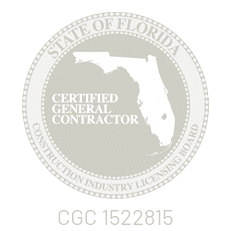The Covid-19 pandemic has altered reality for industries worldwide and shifted how daily operations occur. Companies have had to adjust to new mandates, updated protocols, and employee shortages quickly and intelligently to keep their businesses physically — and legally — operating. While most people hoped life would go back to business as usual, others quickly realized the necessity of finding ways to successfully navigate this new norm for a handful of reasons. Read on to learn about changes to the building process and how Decker Construction has adapted in the face of these uncertain times.
Changes to the Building Process
Before the pandemic hit, the professional world was already moving in the direction of remote work. Technology has seeped its way into nearly every aspect of the construction process over the last ten years, and organizations were happily utilizing the optional, beneficial aspect of this shifting culture.
After the pandemic hit, Zoom daily participants jumped from about 10 million in December 2019 to more than 300 million in April 2020. Although some companies were relatively prepared for this major change in daily operations, the ability to continue work in a completely virtual way wasn’t something that all industries could accommodate.
Aside from the logistical components of remote work, our Decker Construction team quickly began to miss face-to-face interactions during meetings and during in-person client walk-throughs. We thrive on the relationships we’ve forged with our work family and industry friends. The lack of those interactions, plus the fear of the unknown, made it extremely difficult for many to focus and work in their new foreign settings.
Additionally, many construction companies were forced to seek out innovative solutions to address ongoing complications in the wake of the pandemic. Below are three main areas where our industry was hit hardest.
Price Increases
Technology
Investing in technology can often be extremely costly, yet this is something that many construction companies chose to pursue after the pandemic began and has paid off in the long run. To keep the process moving along while being unable to work face-to-face with many important people during the various stages of construction, construction managers were motivated to use digital tools like Zoom for virtual meetings and communication, investing in project management and tracking software. They also quickly became fluent in any new technology their subcontractors, designers, and engineers may now use.
Construction management software, like Procore, which we use here at Decker Construction, allows everyone working on a project to connect in one organized place for a more seamless construction process. Architects, engineers, designers, construction managers, and subcontractors can set deadlines and manage finances through this platform. Most importantly, they remain on the same page so that productivity flows in the forward direction.
Materials
Construction managers saw materials costs begin to rise during the pandemic, and one of the most costly issues was the lumber price increase. From May 2020 to May 2021, the price of lumber more than doubled, and from January 2021 to May 2021 alone, the price of lumber rose 30%. This increased initial project estimates in a massive way.
The lumber issue has created a ripple effect in the construction industry, leading to projects being undervalued during appraisals when lumber wasn’t properly considered. The lumber price issue is also connected to commercial building shortages because builders have, at times, been postponed, underfunded, or unable to build because of the low wood supply.
Material Shortages
Supply Chain Issues
The pandemic spawned a worldwide shutdown, halting deliveries of materials and goods and the creation of goods in factories and making the economy reboot more complex than many could have imagined.
According to a Forbes article on supply chain disruption, as 2020 drew to a close, it was increasingly difficult to transport both raw materials and finished goods worldwide. Construction managers continue to feel this tension, which has been the catalyst for countless hiccups throughout the building process and sometimes even causing projects to be temporarily suspended or completely terminated.
Building Off-Site
Off-site construction, or prefabrication, is the construction of certain required building elements at a location other than their final destination. Because of material shortages, construction companies benefited from prefabricated building elements to ensure that once these materials arrived at the construction site, they were ready for implementation and didn’t construction workers for assembly.
Process Delays
Engineers, Subcontractors, and Designers
Many essential members of the construction process like engineers, designers, and subcontractors, became temporarily unable to collaborate due to the pandemic. If already used, communicative technology was effective but if not it became an overnight necessity.
Because some members of these industries were displaced, furloughed, quarantined, and experiencing their peripheral effects, the construction process has continued being disrupted In part, this pushed some construction companies towards innovative solutions like bringing some of these positions in-house.
Job Site Limitations and Workforce Shortages
In the wake of the pandemic, safety organizations such as The Center for Disease Control (CDC), U.S. Department of Health and Human Services (HHS), and The Occupational Safety and Health Administration (OSHA), regularly issued procedural updates aimed at keeping as many people as safe and healthy as possible.
Protocol changes limited the number of construction workers who could be on a job site at a time. They also strained, and sometimes completely halted, indoor work, mandated personal protective equipment, which wasn’t always available, and made projects that required multiple team members extremely difficult to complete.
Some construction companies opted to work night shifts in addition to day shifts to ensure enough people and the right people had access to their construction sites. Even more limiting, it is estimated that nearly one million construction jobs were lost during the beginning of the pandemic, causing many projects to come screeching to a halt.
Building Permits, Appraisals, Well and Septic
Another slow-rolling arm of the construction process focuses on ensuring foundational and legal matters are handled in a timely and efficient manner. Among these are obtaining building permits, property appraisals, and well and septic requirements.
As mentioned above, appraisals posed undervaluing issues for construction managers resulting in budget problems. Building permits, appraisals, and well and septic were also often delayed due to lack of resources, able-bodied individuals, and rigid time constraints.
Force Majeure
Finally, the construction industry operates not only on strict timeframes, detailed budgets, and many outsourced people and materials but on legal and binding contracts that aim to keep every party involved safe and accountable.
Force Majeure “refers to the occurrence of an event, which is outside the reasonable control of a party and prevents that party from performing its obligations under a contract.“
As you can imagine, the pandemic pushed many contracts to the realm of unforeseeable events because of the ensuing domino effect. As a result, this claim moved its way to the forefront of many construction contracts and pre-construction conversations.
Patience, Preparation, Communication With Decker
So how have construction companies and construction managers like us managed to navigate the uncharted territory that is the pandemic and keep our business operational?
First, we’ve learned the importance of accepting that things will probably take a little longer than the initial projection and being patient with all parties involved, including ourselves. Next, we work to be as prepared as possible based on common issues we’ve faced since the beginning. Finally, expertly communicating to every party involved at the beginning, throughout, and at the end of projects. This means verbally communicating unforeseen issues that arise as soon as they happen and keeping a written list documenting what, when, and why issues happened that can easily be referenced when needed.
As seasoned construction managers, the Decker Construction team is fortunate to have years of experience under our toolbelt that guided us during this difficult transitional period. We feel grateful for the processes we’ve been allowed to make more efficient, being able to remain operational thanks to many internal and external forces, and strengthening our ability to serve our clients in innovative, effective, and safe ways.
Visit our website today to learn how Decker Construction can help you create the commercial building of your dreams!











